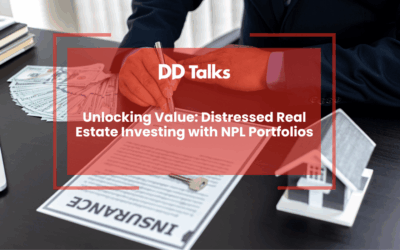What is an NPL Portfolio?
An NPL (Non-Performing Loan) portfolio is a crucial concept in the financial sector, referring to loans that are in default or close to being in default. Managing an NPL portfolio is one of the biggest challenges for banks and financial institutions. This comprehensive article will delve into what an NPL portfolio is, how it is formed, the factors to consider in its management, and its impact on the economy.
What is an NPL (Non-Performing Loan)?
An NPL is a loan where the borrower is not making interest payments or repaying any principal. Typically, a loan is classified as non-performing when payments are overdue by 90 days or more. These loans pose a significant risk to banks’ balance sheets and can threaten financial stability.
How is an NPL Portfolio Formed?
NPL portfolios forms when banks cannot recover the loans they have issued. Several factors can lead to the creation of an NPL portfolio:
- Economic Conditions: Economic crises, recessions, or macroeconomic fluctuations can reduce individuals’ and companies’ incomes, making it difficult for them to repay loans.
- Management Errors: Mistakes in banks’ credit assessment and management processes can lead to the issuance of risky loans.
- Borrower’s Financial Condition: Borrowers may face financial difficulties, such as job loss or bankruptcy, that impede their ability to repay loans.
- Market Conditions: Contractions in specific sectors or sudden price changes can cause firms operating in those sectors to struggle with loan repayments.
Management of NPL Portfolio
. Here are some key strategies for managing an NPL portfolio:
- Early Warning Systems: Continuously monitoring loan performance and identifying potential risks early can prevent the formation of NPLs.
- Restructuring: Restructuring loans to improve the borrower’s financial situation can increase the likelihood of repayment.
- Collateral Management: Effectively managing the collateral against loans can mitigate the impact of repayment issues.
- Selling and Transferring: Selling or transferring NPL portfolios to third parties can relieve banks’ balance sheets.
Impact of NPL Portfolio on the Economy
High levels of NPL portfolios can limit banks’ lending capacity, negatively impacting economic growth. Here are some effects of NPL portfolios on the economy:
- Credit Crunch: The increased capital banks need to manage NPL portfolios can limit the issuance of new loans.
- Banking Crises: High NPL ratios can increase the risk of bank failures, leading to financial instability.
- Economic Growth: Reduced access to credit can negatively affect investments and consumption, slowing down economic growth.
Conclusion
An NPL portfolio is a critical issue for the health of banks and the financial system. Effective NPL management is vital for maintaining financial stability and supporting economic growth. By employing strategies such as early warning systems, restructuring, and collateral management, banks can mitigate potential risks. Globally, managing NPL portfolios and developing strategies in this area are essential for enhancing the resilience of the financial system.
Understanding the Purpose of NPL: Key Insights for Beginners




0 Comments